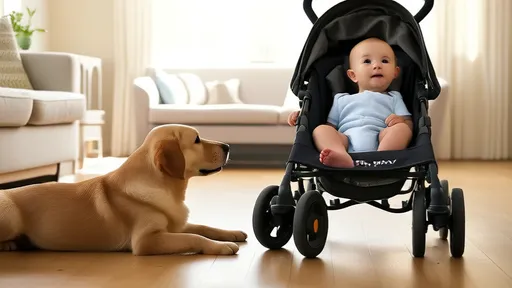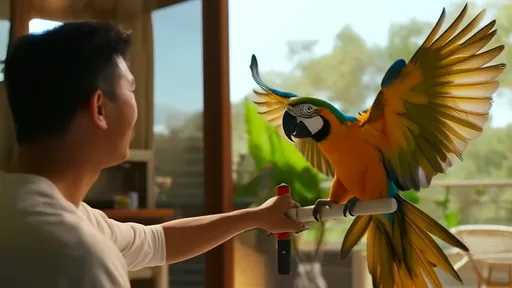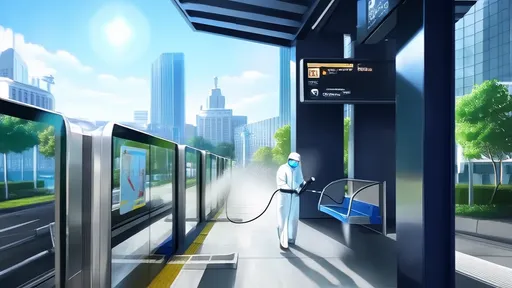Teaching a dog to "wait" is one of the most practical and potentially life-saving commands a pet owner can instill. Unlike a traditional "stay," which implies prolonged immobility, "wait" is a versatile cue that can be applied in countless real-world scenarios—from pausing before crossing a street to momentarily freezing before mealtime. The beauty of this command lies in its adaptability; it can be tailored to a dog's individual learning pace through progressive training phases.
Many novice trainers make the mistake of expecting immediate compliance with a complex "wait" scenario, such as holding position at an open door. However, dogs learn best through incremental challenges that build confidence. The foundation begins in a low-distraction environment, where the handler establishes clear body language and consistent verbal markers. A relaxed posture and open palm signal often work in tandem with the verbal cue to create initial understanding.
Early sessions focus on micro-durations—sometimes just half a second of hesitation before marking the behavior with a release word like "okay" and rewarding. This instantaneous positive reinforcement helps the dog associate the brief pause with pleasant outcomes. Over multiple repetitions, the duration stretches gradually, always ensuring the dog succeeds more often than it fails to maintain enthusiasm.
Distance introduces another layer of complexity once duration is established. Handlers might take a single step backward during the wait, returning to reward if the dog maintains position. This phase requires particular patience, as many dogs instinctively want to close the gap. Trainers often see regression when adding distance, necessitating a return to shorter intervals until the dog stabilizes.
Environmental distractions pose the ultimate test of a reliable wait. Starting with mild distractions like a tossed treat nearby, the dog learns that the command overrides even tempting stimuli. Proofing the behavior might involve practicing near squirrel-populated parks or during doorbell rings—always increasing difficulty in manageable increments. Seasoned trainers recommend the "three successes rule" before advancing: if a dog obeys the wait command three consecutive times at a given difficulty level, only then should the challenge intensify.
Real-world application transforms trained behavior into practical obedience. A solid wait command prevents dogs from bolting out of cars before receiving clearance or rushing toward other animals during walks. Some handlers incorporate subtle variations like "wait at the curb" versus "wait for dinner," using situational cues the dog learns to interpret contextually. This linguistic nuance comes later in training, after the core concept is deeply ingrained.
Common pitfalls include inconsistent enforcement—allowing the dog to self-release sometimes but not others—which creates confusion. Similarly, overusing the command can diminish its urgency. Expert trainers suggest reserving "wait" for situations where compliance is non-negotiable, using alternative cues like "just a minute" for less critical pauses. The command's effectiveness hinges on the dog understanding that "wait" carries absolute expectation.
Advanced applications might involve combining wait with other commands, such as having the dog wait while toys are thrown before retrieving, or pausing mid-agility course. These sophisticated integrations demonstrate how a properly proofed wait command becomes a cornerstone of canine impulse control. The training investment pays dividends throughout the dog's life, creating safer interactions and deeper communication between pet and owner.
Physical markers like raised platforms or designated mats often aid in early training by giving dogs a visual boundary for the wait space. These props are gradually phased out as the dog internalizes the command. Similarly, fading food lures into intermittent rewards prevents treat dependence while maintaining reliability. The transition from constant reinforcement to variable reinforcement schedules strengthens long-term retention.
Seasonal considerations come into play—training a wait during high-energy moments or in novel environments provides stress-testing opportunities. A dog that waits patiently during holiday gatherings or while children play nearby demonstrates truly integrated training. This level of reliability often takes months of consistent practice, emphasizing why professional trainers consider wait one of the ongoing "maintenance" behaviors requiring occasional refreshers.
Ultimately, the wait command exemplifies how structured training nurtures a dog's natural intelligence while preventing dangerous behaviors. Unlike innate tricks, wait represents an artificial construct dogs must consciously adopt—making its mastery particularly impressive. Owners who dedicate time to progressive wait training frequently report it becomes their most utilized and valued command in daily life.

By /Jul 24, 2025

By /Jul 24, 2025

By /Jul 24, 2025

By /Jul 24, 2025

By /Jul 24, 2025

By /Jul 24, 2025

By /Jul 24, 2025

By /Jul 24, 2025

By /Jul 24, 2025

By /Jul 24, 2025

By /Jul 24, 2025

By /Jul 24, 2025

By /Jul 24, 2025

By /Jul 24, 2025

By /Jul 24, 2025

By /Jul 24, 2025

By /Jul 24, 2025

By /Jul 24, 2025